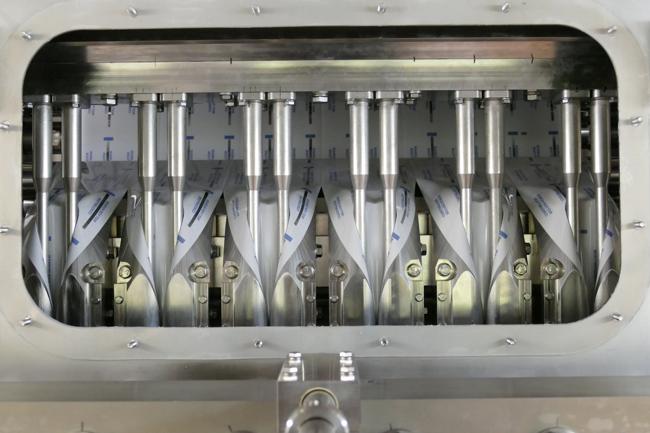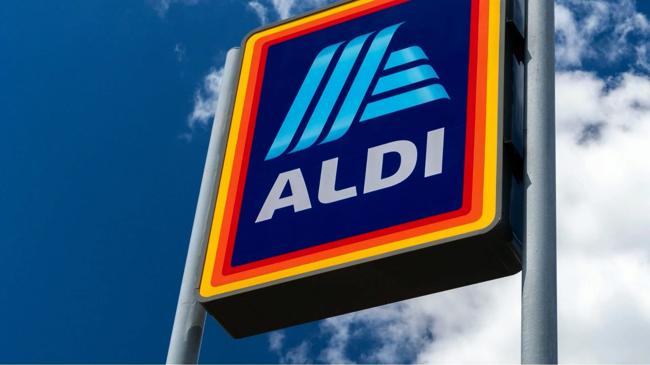Summary
Slovenian dairy processor EuroMilk is using an aseptic stick packing machine to benefits its processing operations and expand its product offerings.
Source: Packaging World

AI News Q&A (Free Content)
Q1: What is aseptic stick packaging, and how does it benefit dairy processors like EuroMilk?
A1: Aseptic stick packaging is a process where sterilized dairy products are packed into pre-sterilized containers under sterile conditions, resulting in shelf-stable products that do not require refrigeration. For dairy processors like EuroMilk, this technology offers extended shelf life, reduced need for cold storage, and the ability to distribute products over greater distances. Additionally, it ensures product safety by preventing contamination and can lower operational costs by minimizing spoilage and energy use associated with refrigeration.
Q2: How has the adoption of aseptic packaging technologies historically impacted the economics of the dairy industry?
A2: The adoption of aseptic packaging, as pioneered by companies like Tetra Pak, has dramatically reduced the costs associated with cold chain logistics by enabling products to be stored and transported without refrigeration. This development has led to broader market access, reduced wastage, and longer product shelf life. It also allows for more efficient inventory management and less product loss, translating into significant economic benefits for dairy processors and retailers.
Q3: What are the environmental advantages of using aseptic stick pack machines in dairy processing operations?
A3: Aseptic stick pack machines contribute to sustainability by reducing food waste through improved product shelf life and lowering the carbon footprint associated with refrigeration and transportation. The compact packaging format also decreases material usage and transportation volume, further minimizing environmental impact. Additionally, advances in packaging materials and sterilization techniques have supported a shift toward more eco-friendly processes in the dairy industry.
Q4: What challenges do dairy processors face when implementing aseptic packaging, and how are these challenges addressed?
A4: Key challenges include ensuring strict sterility throughout the process, maintaining rigorous documentation and quality control, and managing the complexity and costs of advanced machinery. These are addressed by implementing comprehensive sterilization protocols, regular equipment cleaning and maintenance, and investing in staff training. Failure to maintain sterility can result in product recalls and increased waste, so continual monitoring and process optimization are essential.
Q5: According to recent scholarly research, how does artificial intelligence (AI) contribute to improving sustainability and cost efficiency in dairy processing and packaging?
A5: Recent research highlights the use of AI, such as deep reinforcement learning, to enhance energy management in dairy farms and processing facilities. AI-driven battery management systems can optimize electricity consumption, integrate renewable energy sources, and reduce reliance on the grid, leading to lower energy costs and reduced carbon footprint. These advancements demonstrate that AI can play a crucial role in making dairy operations more sustainable and cost-effective. (Source: 'A Deep Reinforcement Learning Approach to Battery Management in Dairy Farming via Proximal Policy Optimization', 2024).
Q6: What are the latest innovations in dairy packaging identified in scientific literature from the past five years?
A6: Innovations in dairy packaging over the past five years include the integration of smart packaging for monitoring product freshness, the use of recyclable and biodegradable materials, and the development of more energy-efficient sterilization and packaging processes. These advances aim to enhance product safety, extend shelf life, and minimize environmental impact, aligning with consumer demands for sustainability and transparency. (Source: 'Informatics & dairy industry coalition: AI trends and present challenges', 2024).
Q7: How do aseptic stick pack machines influence the range of products that dairy companies like EuroMilk can offer to consumers?
A7: Aseptic stick pack machines allow dairy companies to expand their product offerings by enabling the safe packaging of a variety of liquid and semi-liquid dairy products in convenient, portion-controlled formats. This flexibility supports the introduction of new product lines, including on-the-go snacks, fortified milk products, and specialty items, catering to evolving consumer preferences for convenience and health-focused options.
References:
- Aseptic processing – https://en.wikipedia.org/wiki/Aseptic_processing
- Tetra Pak – https://en.wikipedia.org/wiki/Tetra_Pak





